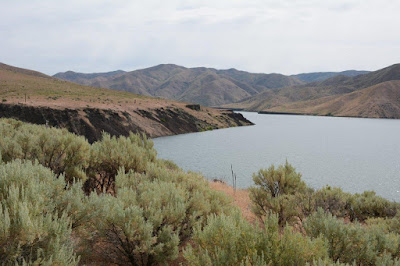Yellowstone National Park
Looking to stretch the three-capitol road trip into more posts? What better way than this, given the drive between the second and third state house includes two of the finest, most scenic national parks in the country. I saw Yellowstone in the afternoon one day and the morning of the next.
Established in 1872, Yellowstone National Park is America’s (and probably the world’s) first national park. With an area of over 3400 square miles in northwest Wyoming and a little more in Idaho and Montana, the park contains half the world’s geysers and geothermal features. To say the area is geologically active is an understatement. The park sits atop one of the planet’s super volcanos.Not that you should cancel any plans, but know that one day, the huge caldera beneath the park will again come to life. The last eruption, 640,000 years ago, was a thousand times greater than the Mt. St. Helens event. It released 240 cubic miles of solid matter across much of the continent…what the disaster movies like to call an “extinction-level event.”
This was my second visit to the park. In May 1995, I had a bowling tournament in Reno. Becky came along and we spent a few days touring the region. Even at this late Spring time, given the high elevation, many roads through the park were still snow-bound. Of course, snow and cold never stops the steam and hot water from pouring forth from the bowels of the earth…often a disconcerting conflict of sensations.
In 1988, the Park was heavily impacted by the (then record) heat waves and fires. More than a third of the park’s area (800,000 acres) burned. This image from the earlier visit shows a burned landscape as far as the eye can see. The other is a closer look at Nature’s inevitable recovery…like She’s done all this before.
On the 2014 trip, it being mid-June, I was dressed comfortably in shirt sleeves. By the time we arrived at the old Faithful Village, we were in a serious snow squall… quite the dramatic reminder that at altitude, one can experience all kinds of weather. Fortunately, the snowstorm was brief and the gift store had a hoodie sweat shirt that saved my butt. It’s a favorite souvenir of the trip.
A number of the special hot springs, mud pots and steam vent areas have boardwalks that allow visitors to get close to the features. Various minerals impart bright colors to the deposits. I got closer to this one because it reminds me of a sea turtle lunging at a jellyfish (or a plastic bag depending on your environmentalist sensibilities).
The Yellowstone River flows out of Yellowstone Lake and after two significant waterfalls, it has carved a canyon that extends twenty-four miles downstream. The canyon is between 800 and 1000 feet deep. The yellow appearance of the walls is due to the iron in the material that had been heated and then further oxidized after exposure to the air. I guess calling the place ‘Rust Canyon’ would have been more accurate but less appealing.
The park is known for its abundant large mammal wildlife. Bison, sheep, elk and moose are common sights. Gray wolves were once important predators in this ecosystem but were extirpated (driven out; eliminated) by the1920’s. The successful re-introduction of wolves has dramatically improved more aspects of the park environment than originally imagined. It’s been shown that when the plant-eating prey animal numbers are controlled, many other environmental conditions improve as well. The Yellowstone wolf story confirmed the important role predators play in a balanced, sustained ecosystem.
There will be another post from Yellowstone…about different ways to show Mammoth Hot Springs. Then it’s south into Grand Teton National Park and the capitol in Salt Lake City.


















